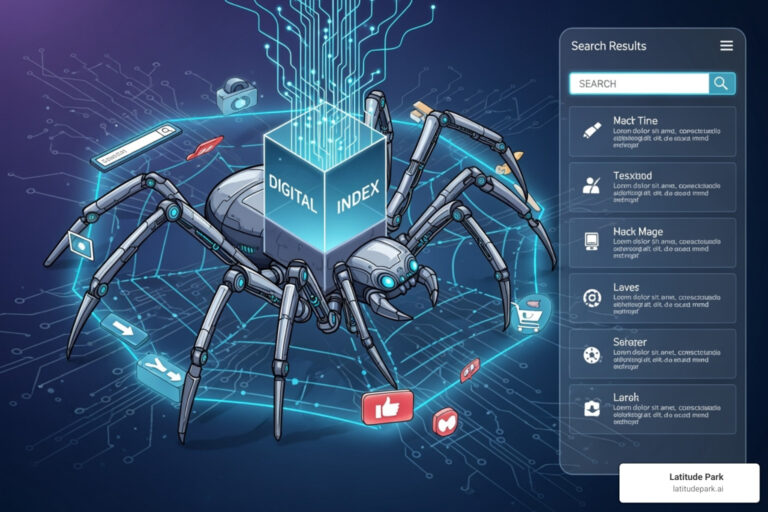Why Automation is a Game-Changer for Small Businesses
Small business automation tools are software platforms that automatically handle repetitive tasks like sending emails, scheduling social media posts, and managing customer data. They help small businesses save time, reduce errors, and scale operations without hiring more staff.
Quick Answer: Essential Small Business Automation Tools
| Tool Type | What It Does | Best For |
|---|---|---|
| CRM Systems | Organize customer data and track interactions | Lead management and sales pipeline |
| Email Marketing | Send automated, personalized campaigns | Customer engagement and nurturing |
| Social Media Management | Schedule posts and track engagement | Brand consistency across platforms |
| Accounting Software | Automate invoicing and expense tracking | Financial management |
| Project Management | Assign tasks and track deadlines | Team coordination |
The numbers are compelling. Research shows that entrepreneurs dedicate up to 16 hours weekly to repetitive processes—time better spent on growth. Even more striking, waiting just 30 minutes to contact a lead decreases your odds of qualifying them by 21 times compared to responding within five minutes.
This is where automation becomes essential, not optional.
It’s important to distinguish between business process automation (internal operations like HR and finance) and marketing automation (customer-facing activities like email campaigns). Most small businesses benefit from both.
The real power of automation lies in doing what’s manually impossible—like sending personalized emails to thousands of customers, scoring leads by behavior, or maintaining a consistent social media presence across all platforms.
For franchise marketers, automation is key for coordinating campaigns across multiple locations while maintaining brand consistency. It allows you to schedule content once for all locations instead of posting manually to each.
I’m Rusty Rich, founder of Latitude Park. Since 2009, I’ve helped small businesses and franchises implement small business automation tools that deliver measurable results. The key is to start with high-impact areas and scale strategically.

This infographic shows the automation cycle: 1. Automate repetitive tasks (e.g., emails, social posts). 2. Analyze data to see what works. 3. Optimize workflows based on insights. This continuous loop improves efficiency and frees up time for strategic growth.
The Core Benefits of Automating Your Marketing
Small business automation tools give you back the hours you’re losing to repetitive tasks. Instead of scheduling social posts or sending follow-up emails manually, you can focus on work that moves your business forward.

The time savings alone are significant. With automation, you set up processes like social media schedules or welcome emails once, and they run themselves. This isn’t about being lazy; it’s about being strategic with your most valuable resource: time.
Automation’s real value shines in lead generation and response speed. The data is striking—waiting even 30 minutes to make contact decreases your odds of qualifying a lead by 21 times compared to responding within five minutes. Automation ensures you never miss that critical window. When someone requests a quote, your system can respond instantly, connecting with prospects at their peak interest.
The impact on customer engagement is equally powerful. Automation lets you deliver personalized experiences at scale, like sending birthday discounts or triggering educational content based on browsing behavior. This consistency is vital for lead nurturing, as most prospects need time and information before buying. You can create automated sequences that educate prospects over weeks or months. The results are clear: companies that excel at lead nurturing generate 50% more sales-ready leads at a lower cost.
For franchise businesses, this consistency is even more critical, ensuring every location delivers the same quality experience with options for local personalization. Modern small business automation tools also integrate with your content marketing. Create a blog post once, and automation can distribute it across email and social media, multiplying your reach without multiplying your workload.
Want to take your lead nurturing to the next level? Check out our guide on Lead Nurturing Best Practices for Long-Term Success for strategies that turn prospects into loyal customers.
Key Types of Small Business Automation Tools to Consider
When we talk about small business automation tools, we’re referring to a toolkit of specialized platforms that streamline different parts of a business. You can choose an all-in-one solution or build a custom stack of tools that excel at specific tasks. The key is understanding what each tool does and how it fits your marketing strategy.
Customer Relationship Management (CRM) Systems
A CRM is the backbone of your business, organizing all customer data and interactions in one place. It gives you a complete picture of each relationship. CRMs excel at sales pipeline management, letting you see where each lead is in your sales process. They use lead scoring to automatically rank prospects based on their engagement, helping you identify who is ready to buy.
Automated follow-ups are a game-changer. A CRM can trigger the perfect message when a lead takes a specific action, like downloading a guide, ensuring no one slips through the cracks. The growth of the CRM market, expected to reach USD 163.16 billion by 2030, shows how vital these tools are for scaling success.
For a comprehensive look at how to leverage CRM for sales growth, dive into our Small Business Sales Automation Ultimate Guide.
Email Marketing Automation Platforms
Email remains a high-ROI marketing channel, and automation makes it even more powerful. These small business automation tools let you send the right message to the right person at the right time. The key is audience segmentation—grouping contacts by behavior, preferences, or purchase history to send highly relevant content.
Automated welcome emails are incredibly effective. Sent immediately after someone subscribes, welcome emails have a 42% higher read rate than standard promotional emails because they arrive when engagement is highest. Drip campaigns take this further, delivering a series of emails over time to nurture new customers or warm up leads.
Cart abandonment emails are another powerful feature. An automated reminder sent to someone who left items in their cart can recover otherwise lost revenue, with open and click-through rates far exceeding typical emails.
Want to master email sequences that actually generate revenue? Check out our guide on How Can Drip Marketing Increase Your Revenue.
Social Media Management Tools
Keeping up with social media can be overwhelming. Social media management tools solve this by letting you schedule content in advance and manage multiple platforms from a single dashboard. You can plan and schedule a week or month of posts in one session, and the tool will publish them at optimal times.
These tools also track engagement and provide analytics, showing you which posts resonate with your audience and when they’re most active. This data is invaluable for refining your strategy. For franchises, these tools are essential for maintaining brand consistency across locations. Maintaining your small business’s social presence is an important way to reach customers, and automation makes it sustainable.
If you’re managing multiple locations, our insights on Digital Marketing Strategies for Franchises: Maximizing Online Success will help you create a cohesive approach.
How to Choose and Implement the Right Small Business Automation Tools
Choosing the right small business automation tools is about finding solutions that solve your actual problems. It’s not about chasing the most features or the highest price tag.

Start with a needs assessment. What tasks are eating up your time? Write down your pain points and rank them by impact. This clarity will prevent you from buying tools you don’t need.
Consider scalability. Will the tool grow with your business? Look for platforms with tiered plans you can upgrade later. Ease of use is also critical; if a tool is confusing during the free trial, it won’t get easier. Your team has to be able to use it effectively.
Integration capabilities are crucial. Your tools must communicate with each other to avoid manual data transfer. Check for integrations with your existing website, CRM, and other platforms. Finally, don’t overlook customer support. When something goes wrong, responsive support is invaluable.
Understanding Costs and Budgeting for Automation
The pricing for small business automation tools varies widely. Many platforms offer useful free plans for solo entrepreneurs, with limitations on contacts or features. These are perfect for testing automation before committing financially.
As you grow, you’ll encounter tiered pricing models, often based on the number of users or contacts. Be aware of potential hidden fees for premium features or usage overages. The real question isn’t cost, but return on investment (ROI). If a $50/month tool saves you hours of work or recovers hundreds in sales, it’s a clear win. Focus on the long-term value, which includes better customer experiences and the ability to scale efficiently.
Avoiding Common Pitfalls: Beyond ‘Set It and Forget It’
The idea of ‘set it and forget it’ is a myth. Automation requires ongoing human oversight. As one expert noted, leaving marketing on autopilot with no oversight is a bad idea. Your business evolves, and your automated campaigns must, too.
Regular monitoring is essential. Review your dashboards, emails, and social posts weekly or monthly to ensure they are still relevant and effective. Use the data to optimize campaigns through A/B testing and adjusting your targeting.
Most importantly, automation should improve, not replace, the personal touch. Use it to handle repetitive tasks so you can focus on genuine human interactions where they matter most, like complex customer service or high-value sales conversations. Automation is a smart assistant, not a replacement for you.
Measuring Your Success and The Future of Automation
Implementing small business automation tools is an investment, so you need to track its payoff. Modern platforms make it easy to see what’s working through built-in dashboard analytics, which consolidate performance data from all your campaigns into one place.
This allows you to focus on the right Key Performance Indicators (KPIs)—the specific numbers that show if you’re hitting your goals. Using this data to make data-driven decisions takes the guesswork out of marketing and lets you focus on what the numbers actually show.
Key Metrics for Measuring Marketing Automation ROI
To understand the value of your automation, track these essential metrics:
- Conversion rates: The percentage of people taking a desired action (e.g., making a purchase). Higher rates mean your automation is effective.
- Lead quality score: How likely a lead is to become a customer. Better scores mean you’re attracting the right audience.
- Customer Lifetime Value (CLV): The total revenue a customer generates over time. Good automation builds loyalty and increases CLV.
- Cost Per Acquisition (CPA): How much it costs to gain a new customer. Automation should lower this cost.
- Email open and click-through rates: A pulse check for your email campaigns’ relevance and engagement.
- Website traffic: Shows how well your automated campaigns drive people to your site.
The Growing Role of AI in small business automation tools
The automation landscape is being transformed by Artificial Intelligence (AI). Research from McKinsey suggests that up to 70% of all employee tasks could soon be automated, largely driven by AI. Unlike traditional automation that follows set rules, AI learns and adapts over time.
Predictive analytics is a powerful AI tool that can forecast future trends, such as identifying customers at risk of leaving. AI-powered copywriting tools can help generate personalized subject lines and social media posts, freeing you up for more strategic work. Modern AI chatbots can handle complex customer conversations 24/7, providing immediate support.
The integration of AI into small business automation tools enables smarter, more responsive automation that makes every customer interaction feel personal and timely.
To learn more about what AI means for marketing, check out our article on AI Digital Marketing: Opportunities and Challenges.
Frequently Asked Questions about Small Business Automation
Here are answers to the most common questions we hear about small business automation tools.
What’s the difference between business process automation and marketing automation?
Business process automation (BPA) focuses on internal operations—the “back office” tasks that improve efficiency, like HR, finance, and project management. Its goal is to reduce costs and errors in non-customer-facing work.
Marketing automation focuses on customer-facing marketing and sales tasks—the “front office” activities that drive growth. This includes lead generation, email campaigns, and social media scheduling. Its goal is to generate leads, convert customers, and drive revenue.
Can automation feel impersonal to customers?
It can, if used poorly. The goal isn’t to eliminate human interaction but to enable personalization at scale. Good automation uses data to send the right message to the right person at the right time, making communication feel more relevant, not less.
Balance is key. Automate repetitive tasks to free up your team for the high-value, human conversations that build strong relationships. Automation should improve personal connections, not replace them.
Is automation expensive for a solo entrepreneur or a very small business?
Not anymore. Many powerful small business automation tools offer free or low-cost entry-level plans designed for small businesses and solo entrepreneurs. These plans may have limitations but are perfect for starting out without a significant investment.
The smart approach is to start with tools that solve your biggest pain points and then scale as your business and revenue grow. The return on investment from time saved and new business generated often far exceeds the modest cost.
Conclusion: Start Your Automation Journey Today
If one thing is clear, it’s that small business automation tools are essential for staying competitive. They give you back your most valuable resource: time. Time to think strategically, build customer relationships, and grow your business instead of getting bogged down in repetitive tasks.
You don’t need to automate everything at once. Start small. Identify one or two repetitive tasks that consume your time, find a tool that fits your budget (many have free plans), and build from there. The goal is progress, not perfection.
The cycle of automating, analyzing, and optimizing is an ongoing journey of improvement. As your business evolves, so should your automation strategy.
At Latitude Park, we help small businesses and franchises grow by leveraging powerful digital strategies, with automation as a core component. We understand the unique challenges you face, from starting out solo to coordinating campaigns across multiple franchise locations.
Ready to take the next step? For a comprehensive look at the tools that can make the biggest impact, explore our detailed guide on Small Business Automation Tools. Your future self—with more time, more leads, and less stress—will thank you.










